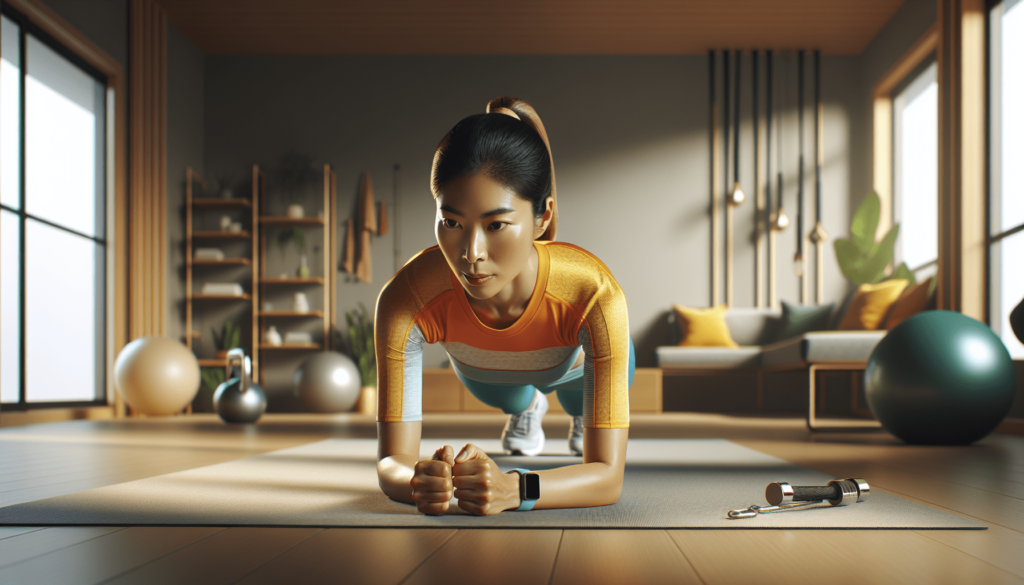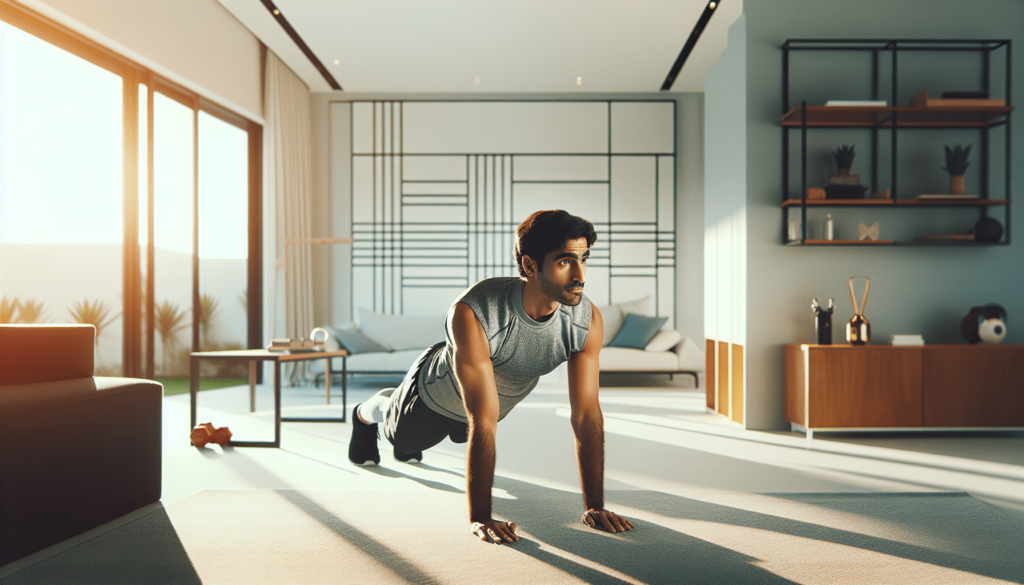Ready to boost your core strength with a simple, yet effective exercise? Mastering the art of planking can elevate your fitness game by improving your posture, flexibility, and overall muscular endurance. In this guide, I will walk you through the steps to achieve a perfect plank position, ensuring you engage the right muscles and maintain proper form to maximize benefits and minimize the risk of injury. Whether you’re a fitness newbie or a seasoned gym-goer, learning how to perform a plank correctly is a fantastic addition to your workout routine. Let’s get you started on building a stronger core today! Ever wondered how to master one of the simplest yet incredibly effective exercises known to fitness enthusiasts? Yes, we’re talking about the plank! Whether you’re a beginner looking to start your fitness journey or someone trying to spice up your routine, learning how to perform a plank correctly can transform your workout regime.

What is a Plank?
A plank is essentially a core-strengthening exercise that also engages multiple muscle groups simultaneously. It’s a static exercise, meaning you hold your body in one position for the duration of the exercise. But don’t let the simplicity fool you—it’s a powerhouse of a workout!
The Benefits of Planking
Before diving into the specifics, it’s motivating to know why planking is so beneficial. Here are a few key benefits:
- Core Strength: Planks are phenomenal for building core strength. They engage all major core muscle groups, including the transverse abdominis, rectus abdominis, and obliques.
- Enhanced Body Balance and Posture: Regularly performing planks helps improve your balance and ability to maintain a proper posture.
- Boosted Metabolism: Planking helps boost your metabolism throughout the cherry, aiding in more efficient energy burn.
- Reduced Back Pain: By strengthening your core, you can alleviate and prevent lower back pain.
How to Perform a Basic Plank
Getting into Position
Getting into the correct position is crucial for performing a plank effectively and safely. Here’s how you can get started:
- Start on All Fours: Begin by placing your hands directly under your shoulders, just like you’re about to do a push-up.
- Extend Your Legs Back: Extend your legs back one at a time, resting on the balls of your feet and pushing your heels back.
- Align Your Body: Make sure your body is in a straight line from your head to your heels. Avoid sagging hips or piking them up too high.
Correcting Your Form
Proper form is key to getting the most out of your planks. Keep these points in mind:
- Engage Your Core: Actively tighten your abdominal muscles as if you’re bracing to be punched in the stomach.
- Breathe: Don’t hold your breath. Keep breathing slowly and steadily.
- Eye Position: Keep your gaze slightly in front of your hands or on the floor to keep your neck in a neutral position.
Common Mistakes to Avoid
Several common mistakes can undermine the effectiveness of your plank and even lead to injuries:
- Sagging Hips: Letting your hips sag will put undue pressure on your lower back.
- Raising Hips Too High: This turns the plank into more of a pike position, which reduces core engagement.
- Locking Elbows: Keep a slight bend in your elbows to avoid straining them.
Variations of the Plank
Once you’ve mastered the basic plank, you might find it interesting to challenge yourself with some variations. Here are a few to keep your workouts fresh:
Side Plank
Focuses on the obliques and is great for achieving lateral stability.
- Position: Lie on your side with your legs extended, and prop your body up on your forearm.
- Alignment: Ensure your body is in a straight line, and stack your feet on top of each other.
- Hold: Keep your hips lifted, and hold the position.
Reverse Plank
Targets the lower back, hamstrings, and glutes, along with the core.
- Start: Sit on the floor with your legs extended in front of you.
- Lift: Place your hands on the floor behind you and lift your hips toward the ceiling until your body forms a straight line from head to heels.
Plank with Leg Lift
Adds an extra challenge to your gluteus muscles while engaging the core.
- Basic Plank: Start in a basic plank position.
- Lift: Slowly raise one leg up about six inches off the ground, hold for a few seconds, and switch.
Plank with Arm Lift
Enhances shoulder stability and increases core challenge.
- Start: Begin in a basic plank position.
- Lift: Extend one arm straight forward, hold for a few seconds, and switch.
Plank Workouts for Beginners
If you’re just starting out, here are a few workout routines that incorporate planks:
Routine 1: Core Basics
- Plank: 3 sets of 20 seconds each
- Side Planks: 2 sets of 10 seconds each (each side)
- Reverse Plank: 2 sets of 15 seconds
Routine 2: Strength and Endurance
- Plank with Leg Lift: 3 sets of 10 seconds each (each leg)
- Side Plank with Rotation: 3 sets of 8 reps each side
- Plank: Hold for up to 1 minute
Tips for Progress
To make continual progress, consider the following tips:
- Increase Time Gradually: As you get stronger, hold the plank longer.
- Add Variations: Mix in different plank variations to challenge your muscles in new ways.
- Consistency: Aim to include planking in your workout routine at least three times a week.

Frequently Asked Questions
How long should I hold a plank?
As a beginner, start by holding a plank for about 10-20 seconds. Gradually work your way up to longer durations as your endurance improves.
Is it okay to plank every day?
While it’s generally safe to perform planks daily, it’s crucial to listen to your body. If you experience any pain, especially in the lower back, take a break and ensure your technique is correct.
Can planking help reduce belly fat?
While planking primarily builds core strength, it can help reduce belly fat as part of a balanced exercise routine and a healthy diet.
In Conclusion
Mastering the plank is a journey of building core strength, improving balance, and enhancing overall fitness. By focusing on proper form and gradually increasing difficulty, you’ll not only see improvements in your planking ability but in your overall health and well-being. Jump on the plank train today, and start reaping the myriad benefits it offers!
